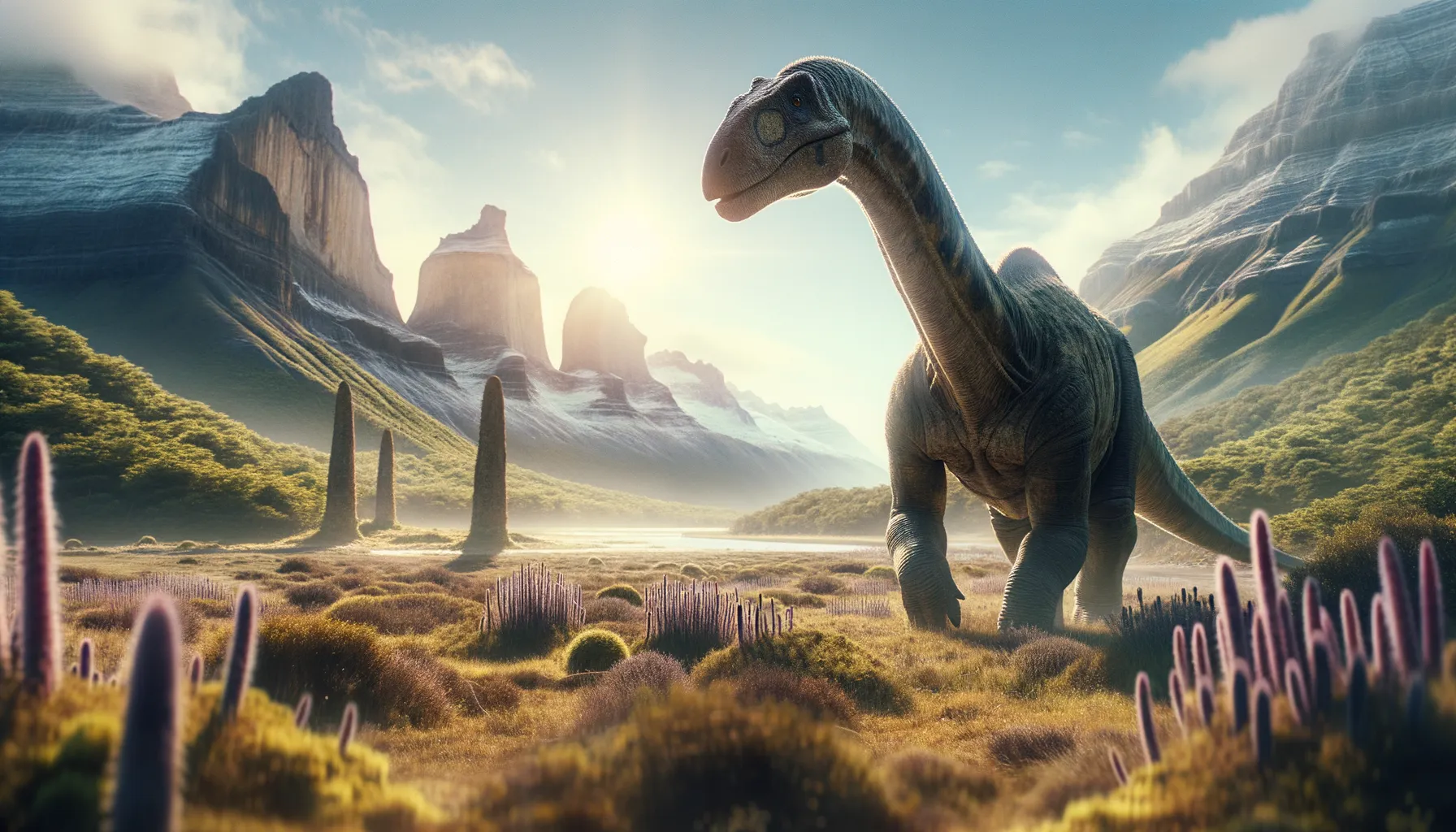
Austroposeidon
Giant of the Cretaceous forests!
Period
Cretaceous
Length
Approximately 25 meters long.
Height
About 5 meters tall at the shoulder.
Weight
Estimated to weigh about 50 tons.
Austroposeidon was a giant sauropod dinosaur from the Cretaceous period. It is known for its massive size and long neck, which allowed it to reach high vegetation. Discovered in Brazil, Austroposeidon provides valuable insight into the diversity of South American dinosaurs. Its name means 'Southern Poseidon', a nod to its homeland and its impressive stature among ancient creatures.
Diet
This massive herbivore fed primarily on leaves and other plant matter. Its long neck allowed it to reach high into the trees for food, much like modern giraffes.
Hunting
Being an herbivore, Austroposeidon did not hunt animals for food. It spent much of its time foraging for plants, utilizing its long neck to reach a wide range of foliage.
Environmental challenges
Austroposeidon faced environmental challenges such as competition for food with other large herbivores. It also had to deal with predators that targeted their young. The changing climate and vegetation could have also posed challenges, influencing their migratory patterns and feeding habits.
Speed
It moved slowly due to its massive size.
Lifespan
It likely lived for several decades.
First discovery
Its fossils were first discovered in Brazil.
Fun Facts
- Austroposeidon was a massive dinosaur that lived around 70 million years ago during the Late Cretaceous period.
- This enormous dinosaur was discovered in Brazil, making it one of the largest dinosaurs ever found in South America.
- Austroposeidon was a sauropod, which means it was a long-necked, herbivorous dinosaur similar to more famous members like Brachiosaurus and Diplodocus.
- The name Austroposeidon pays homage to the Greek god Poseidon, reflecting its likely aquatic associations and formidable size.
- The fossils of Austroposeidon were first unearthed in the 1950s but weren't fully studied and identified until decades later.
- Austroposeidon's neck likely helped it reach high vegetation, allowing it to graze from the tops of trees.
- Even though it was one of the largest dinosaurs, Austroposeidon's fossil remains are still relatively incomplete, leaving much to discover about this ancient giant.
Growth and Development
Austroposeidon experienced gradual growth over many years, reaching full maturity at a slower pace compared to smaller dinosaurs. Juveniles were vulnerable to predation, leading to the development of some defensive behaviors. Social groups may have aided young dinosaurs in growing up and ensuring the protection necessary for survival.
Habitat
Austroposeidon lived in lush, forested environments where vegetation was abundant. These areas provided enough food to sustain its massive size. The dense forests also offered some protection from predators, though open areas were preferred for movement.
Interaction with other species
This dinosaur likely coexisted with various other herbivores and predators in its environment. It may have engaged in social behaviors within its species, possibly moving in small herds. Its size provided a form of protection from predators, though interactions with larger carnivores were inevitable.
Natural lifespan
Austroposeidon likely had a natural lifespan exceeding several decades.
Reproduction
Reproduction likely involved laying eggs in nests, which were possibly guarded by adults. Young Austroposeidon may have grown rapidly to reduce vulnerability to predators. Little is known about their courtship rituals, if any existed.
Social behaviour
Austroposeidon likely exhibited at least some level of social behavior, such as forming groups for protection. These groups may have provided support in raising young and navigating their environment. However, their social structure and hierarchy remain largely speculative.
Fossil locations
Fossils of Austroposeidon have primarily been found in Brazil, particularly within the Bauru Basin. The discovery site offers important geographic information about the distribution of sauropods in South America. Fossils from this region help scientists understand the diverse prehistoric ecosystems that once thrived there.
